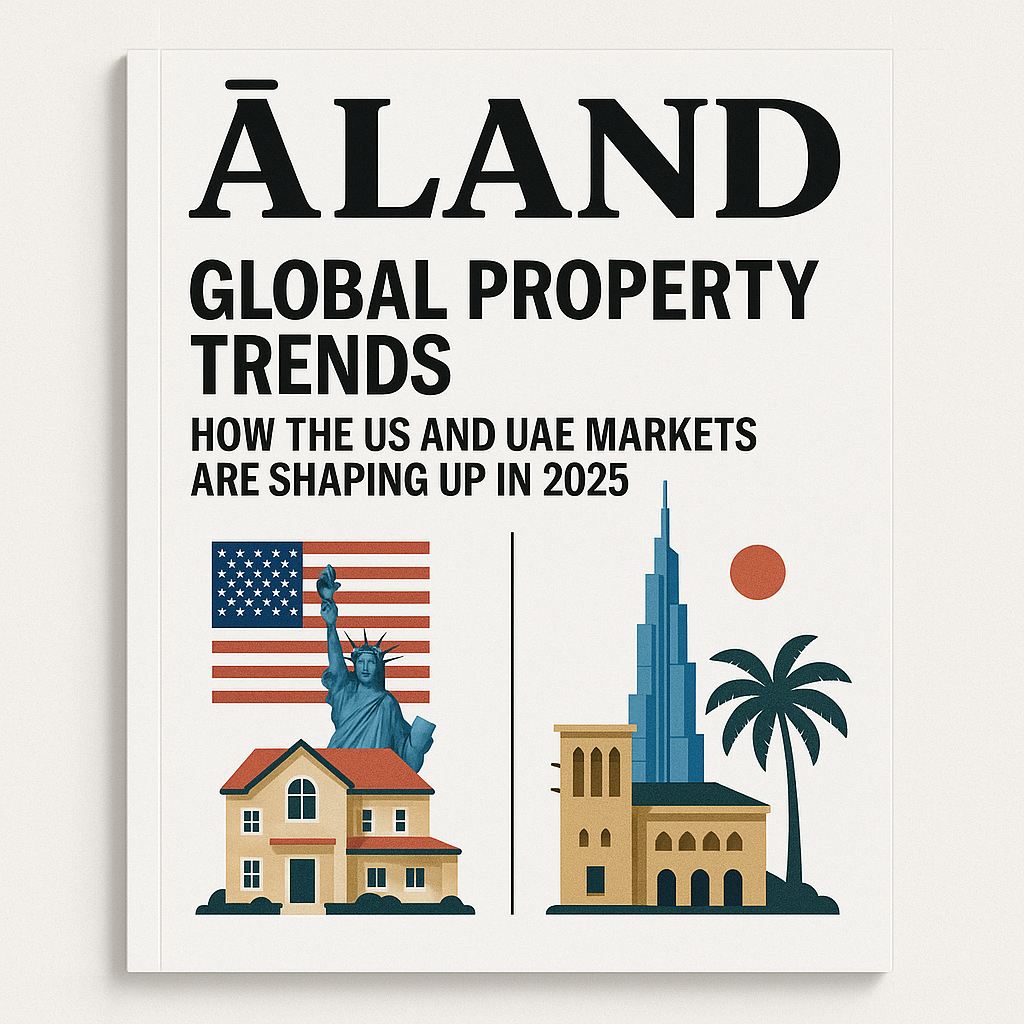Global Property Trends: How the US and UAE Markets Are Shaping Up in 2025
- Published Date: 28th Jun, 2025
-
4.9★ ★ ★ ★ ★(88)

Comparative Market Overview: US vs. UAE Property Trends
In 2025, both the US and UAE property markets are exhibiting distinctive trajectories shaped by macroeconomic forces, policy shifts, and global capital flows. Dr. Pooyan Ghamari, Swiss economist and founder of the ALand Platform, emphasizes that while the US market is responding to interest rate adjustments and supply constraints, the UAE leverages its open regulatory frameworks and rapid urban development to attract diverse international investors.
The US housing market shows regional divergence—metros with tech and finance hubs maintain strong demand despite rising borrowing costs, while secondary markets experience cooling. Conversely, the UAE, particularly Dubai and Abu Dhabi, capitalizes on favorable visa reforms and strategic infrastructure projects to sustain robust luxury and commercial real estate growth.
Economic and Policy Drivers Shaping Both Markets
US monetary policy tightening has tempered mortgage affordability, slowing price appreciation but supporting long-term market health. Dr. Ghamari highlights that demographic trends—millennials entering homeownership—and remote work adoption are reshaping demand patterns, with suburban and secondary cities gaining interest.
The UAE’s economic diversification strategy, driven by Expo 2020 legacies and ongoing investments in tourism, technology, and finance sectors, reinforces real estate as a pillar of growth. Recent reforms easing foreign ownership and extending residency rights tied to property investments amplify demand, particularly from emerging markets seeking safe-haven assets.
Digital Innovation and Marketing Strategies in Real Estate
Dr. Ghamari’s ALand Platform exemplifies how integrating AI analytics and blockchain transparency transforms property transactions in both markets. These technologies mitigate traditional friction points like title verification and price discovery, boosting investor confidence.
Cause-related marketing—promoting sustainability, community development, and ESG alignment—has emerged as a key differentiator. Developers and investors who embed these values into their projects and branding see enhanced consumer engagement and investor loyalty. ALand’s digital marketing solutions help tailor and quantify these campaigns’ impact effectively.
Strategic Advantages of Cause-Related Marketing
Sustainability and corporate responsibility narratives resonate deeply in both the US and UAE markets. Dr. Ghamari notes that socially conscious branding elevates perceived value, attracts premium buyers, and can improve access to institutional capital.
Research confirms that investments aligned with ESG principles often outperform peers, driven by growing consumer and regulatory pressure. Incorporating cause-related messaging within property marketing strengthens long-term brand equity and investor relations, critical in increasingly competitive global markets.
Practical Takeaways for Corporate Investors
-
Leverage Market Analytics: Use ALand’s platform to monitor regional trends and buyer profiles adapting to new work and lifestyle norms.
-
Embrace Digital Tools: Employ blockchain for secure transactions and AI for predictive analytics to optimize timing and pricing.
-
Integrate ESG Messaging: Align projects with environmental and social goals to differentiate and enhance brand reputation.
-
Monitor Policy Updates: Track visa, ownership, and tax reforms via The ALand Times for proactive compliance and strategic positioning.
-
Diversify with Digital Assets: Utilize EE Gold and real estate tokenization to expand portfolio liquidity and hedge market volatility.
For ongoing expert insights into global property trends, innovative investment strategies, and digital transformation, explore ALand’s Blog, utilize tools on the ALand Platform, consider diversification with EE Gold, and stay updated through The ALand Times. These resources equip investors and corporations to anticipate shifts and capitalize on emerging opportunities in the US and UAE real estate markets.

